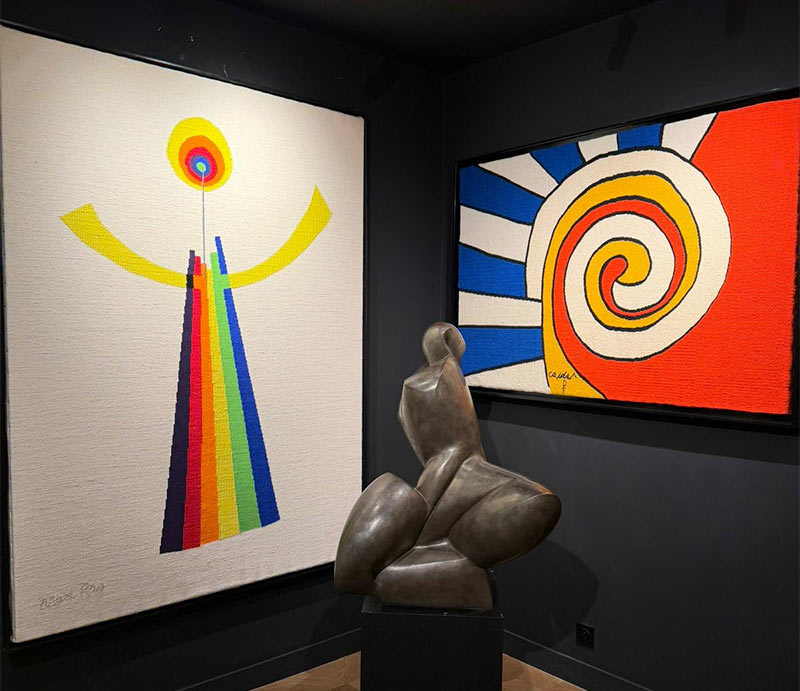Most people know Alexander Calder for his mobiles—the floating, dancing sculptures that seem to breathe with the air—but fewer people realize just how extraordinary his work in tapestry is. And honestly, once you see these pieces in person, it makes perfect sense. Calder was always thinking about movement, balance, and bold shapes, and tapestry, surprisingly, gave him another way to express all of that. His woven works, especially the rare Bicentennial Tapestries now available at our Paris gallery, have this presence that fills a room without overwhelming it, which is probably why both new collectors and interior designers are becoming so fascinated by them.
Calder spent a significant part of his career in France, and that period shaped his artistic direction in ways that are still obvious today. When he settled into his studio in Saché, in the Loire Valley, he was surrounded by the revived tradition of Aubusson tapestry-making—which must have felt like the perfect opportunity for someone who loved experimenting. Working with the master weavers at Atelier Pinton Frères, he created large wool and silk tapestries that were entirely handwoven. And when you hear that each square yard took about a month to produce, it really puts into perspective just how detailed and intentional these works are.
Among all of Calder’s textile projects, the most important—and certainly the most collectible—are the Bicentennial Tapestries, a complete series of six designs created in 1975 for the 200th anniversary of the American Revolution. As you described in your earlier article, the commission came during a moment when the United States was feeling a complicated mix of nationalism and hope, and Calder took that energy and translated it into abstract forms, vibrant colors, and rhythmic lines rather than literal patriotic imagery.

Alexander Calder, Bicentennial Tapestries, 1975, wool, each 41 x 59 in., on display in Rothenberg Hall. Gift of the Berman Bloch family. Photo by Lisa Blackburn. The Huntington Library, Art Collections, and Botanical Gardens.
The Six Bicentennial Tapestries
Collectors love this series for many reasons, but one of the biggest is its rarity. Calder originally intended for all six designs to be produced in 200 sets, but only around 37 full sets were ever realized. That means each individual tapestry is incredibly hard to find, especially in perfect condition. For anyone looking for Alexander Calder tapestries in Paris, these six works are considered essential.
Here’s the full set:
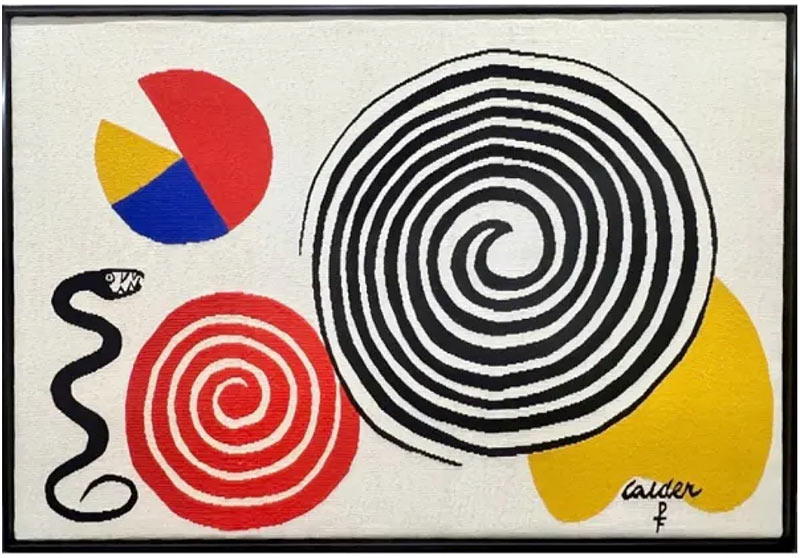
La Poire, Le Fromage et Le Serpent: Spirals, a serpent, bold shapes—this one feels lively and a little mischievous, in the most Calder way possible.
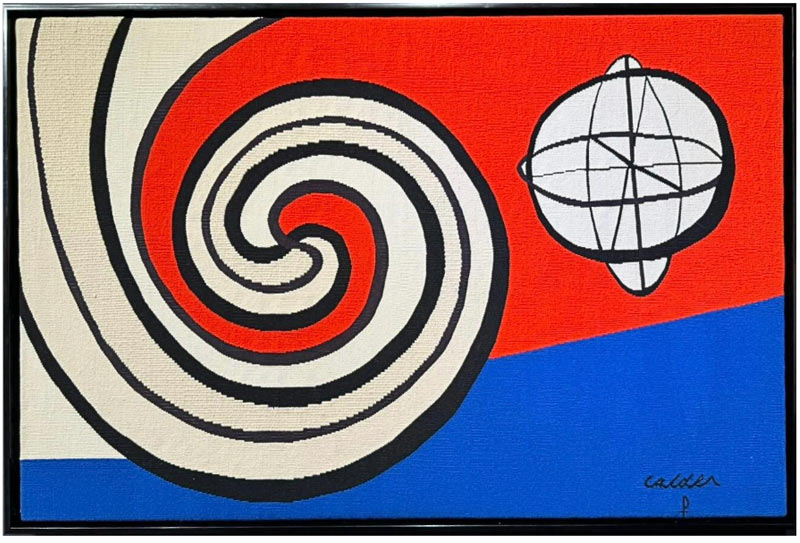
Le Sphère et les Spirales (The Sphere and the Spirals): A beautiful balance of curves and circular forms, almost like the visual equivalent of a rhythm.

Trois Spirales (Three Spirals): Strong, simple, graphic, and extremely “Calder”—this one has a clarity that people connect with immediately.
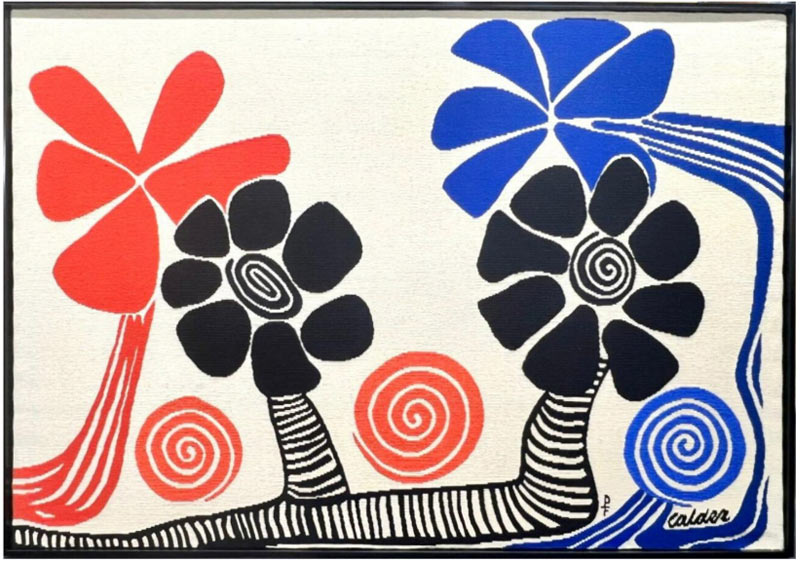
Les Palmiers (The Palms): Not literal palm trees, but abstracted shapes that sway visually, full of movement and energy.
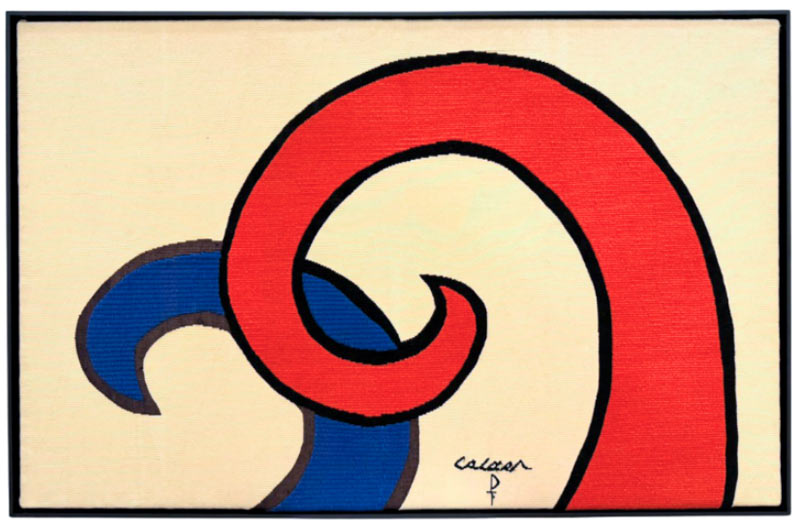
Les Vagues (The Waves): Rising, flowing forms that create a sense of lift, almost like the piece is breathing.
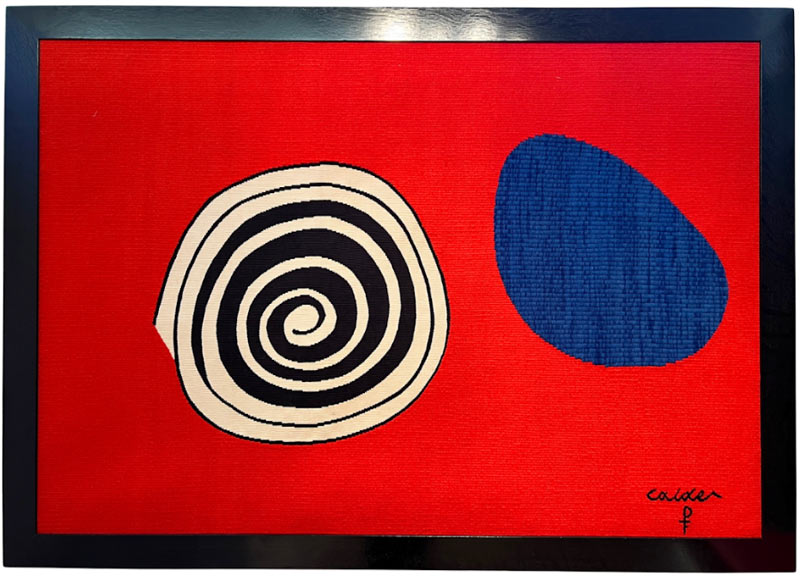
La Tache Bleue (The Blue Blob): The final tapestry in the series, centered around a bold blue form that anchors the whole composition.
Seeing all six of them together really shows how consistent Calder’s visual language was across different mediums. Even though nothing in tapestry physically moves, the works feel active—almost animated.
→ See also our page dedicated to Alexander Calder to learn more about his textile work.
Why Paris is the Right Place to Discover Calder
Because Calder lived and worked in France for many years, it feels particularly fitting that these tapestries can be viewed in Paris today. There’s something special about experiencing them here, surrounded by the same artistic culture that influenced him while he created them. For collectors searching for Calder artworks in Paris, Boccara Gallery is one of the few places where you can actually encounter these pieces up close.
Interior designers especially tend to gravitate toward these tapestries because they’re bold but not overwhelming. They bring color, texture, and a sculptural quality into a space without competing with everything else around them. A Calder tapestry tends to become the anchor of a room—something that feels both historic and modern at the same time.
Visit Boccara Gallery Paris
The Bicentennial Tapestries mark a major chapter in Calder’s career, and having access to the full series is incredibly rare. For anyone curious about bringing one of these works into their home or collection, feel free to contact us or visit Boccara gallery : 16, galerie Véro-Dodat, Paris 1er.
Seeing these works in person is the best way to understand why they’ve remained so important. They carry Calder’s playful energy, his sense of balance, and his unmistakable style—all woven into pieces that feel as alive today as they did in 1975.
If you’re in Paris, our gallery is easy to find and even easier to fall in love with:
Boccara Gallery Paris, 16 Galerie Véro-Dodat.
Les tapisseries du Bicentenaire marquent un chapitre majeur dans la carrière de Calder, et il est extrêmement rare d’avoir accès à l’intégralité de la série. Si vous souhaitez acquérir l’une de ces œuvres pour votre intérieur ou votre collection, contactez-nous ou venez nous rencontrer à la galerie Boccara : 16, galerie Véro-Dodat, Paris 1er.
Voir ces œuvres en personne est la meilleure façon de comprendre leur importance. Elles portent l’empreinte ludique de Calder, son sens de l’équilibre et son style inimitable, autant d’éléments tissés dans des pièces qui semblent aussi vivantes aujourd’hui qu’en 1975.
